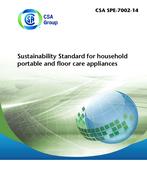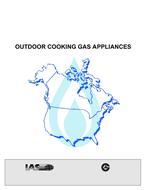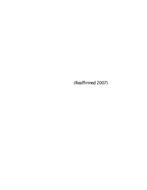Click here to purchase
Preface:
This is the third edition of CSA N288.2, Guidelines for calculating the radiological consequences to the public of a release of airborne radioactive material for nuclear reactor accidents. It supersedes the previous editions published in 2014 and 1991 under the title Guidelines for calculating radiation doses to the public from a release of airborne radioactive material under hypothetical accident conditions in nuclear reactors.
This Standard is part of a series of Standards on environmental management for nuclear facilities. This Standard describes acceptable methods for modelling the consequences of accidents at nuclear reactors for safety assessment and real-time emergency response. This Standard also identifies acceptable data sources and acceptable methodologies to account for specific effects, and recommends standardized end points for the calculations.
This edition has been updated to reflect current industry practice and new research and analysis methods. Major changes to this edition include the following:
a) The definitions have been updated for consistency with the CSA N288 series of Standards.
b) Administrative provisions (e.g., the term “Class 1”) were removed.
c) Additional clarification in areas identified by users was added.
d) The definitions for “beyond design basis accidents (BDBA)” and “severe accident” were aligned with the definitions provided in CSA N290.16-16.
Users of this Standard are reminded that the site selection, design, manufacture, construction, installation, commissioning, operation, and decommissioning of nuclear facilities in Canada are subject to the Nuclear Safety and Control Act and its Regulations. The Canadian Nuclear Safety Commission might impose additional requirements to those specified in this Standard.
The CSA N-Series Standards provide an interlinked set of requirements for the management of nuclear facilities and activities. CSA N286 provides overall direction to management to develop and implement sound management practices and controls, while the other CSA Group nuclear Standards provide technical requirements and guidance that support the management system. This Standard works in harmony with CSA N286 and does not duplicate the generic requirements of CSA N286; however, it may provide more specific direction for those requirements.
Scope:
1.1 Type of consequence assessments
This Standard proposes methods for modelling the consequences of accidents at nuclear reactors for safety assessment and real-time emergency response.
Notes:
1) Models used to assess the consequences of a postulated accident for safety assessment purposes have much in common with those used for a real-time nuclear accident for emergency response purposes, including the calculation of dispersion and air concentrations. However, the two types of models differ in their treatment of source terms and end points.
2) Safety assessment is a prospective activity that includes
a) deterministic and probabilistic calculations carried out for Authority Having Jurisdiction (AHJ) requirements;
b) probabilistic risk assessment for cost-benefit analyses; and
c) deterministic and probabilistic calculations carried out for emergency planning purposes.
3) Emergency response consequence assessment is carried out during a real emergency in support of the protection of the public and the environment. Emergency planning consequence assessment is performed for postulated accidents in support of preparedness activities such as locating reception centres for evacuees and training emergency responders.
4) All nuclear accident plant states are included within the scope of this Standard. (Refer to REGDOC 2.5.2.)
1.2 Facilities
This Standard is designed to provide guidance on how to model the consequences of accidental radiological releases to the atmosphere from nuclear reactor facilities.
When using this Standard with facilities other than nuclear reactors, the user is instructed to exercise caution. In these cases, the user of the Standard is responsible for determining its applicability.
Note: The range of distances discussed in Clause 1.5 might not be appropriate for small nuclear reactors and thus, it is the user?s responsibility to identify models that would be applicable at less than 300 m.
1.3 Operating conditions
This Standard is applicable when nuclear material is released to the atmospheric environment as a result of an accident at a nuclear reactor, subject to the exclusions of Clause 1.10.
Parts of this Standard may be applicable to the consequence assessment of the airborne emissions from anticipated operational occurrences (AOO). In these cases, the user is responsible for determining the applicability of this Standard.
1.4 Time scale
This Standard applies to short-term accidental releases from a nuclear reactor with a duration of a month or less.
Note: Methods of estimating doses for release durations beyond 30 days are beyond the scope of this Standard, but are addressed by other guidance such as that provided in CSA N288.1.
1.5 Spatial scale
This Standard covers local atmospheric dispersion, which for Gaussian plume models is defined as dispersion that occurs in the range of 300 m to 100 km.
Notes:
1) The lower limit was set at 300 m since specialized models are required for closer distances and members of the public rarely reside closer than this. Further downwind, the predictions of the local dispersion models discussed in this Standard are fairly reliable to distances of 20 km. Uncertainties become larger as the distance increases and the local dispersion models become unreliable for individual dose calculations beyond 50 km (see Clause 7.2.6). For individual dose calculations beyond 50 km, see Clause 4.6.4.
2) Emergency response applications can require the range of validity to extend to 50 km despite the reduced accuracy. The accuracy of the Gaussian model limits its application for calculation of individual dose to distances less than 50 km. Nevertheless, the use of Gaussian models is acceptable when calculating the collective dose, because for such aggregate quantities, the errors tend to cancel. The model?s applicability to 100 km covers the need to calculate collective doses incorporating the major urban areas in the vicinity. Doses beyond 100 km make a relatively small contribution to collective doses (see Clause 7.14.2).
3) The user is responsible for interpreting the individual dose in the case of airborne releases from a site with multiple reactor units.
4) At distances greater than this scale, advanced models might be used with appreciation for the limitations of the model being considered.
1.6 Meteorological sampling
This Standard covers both
a) single weather scenario approaches (deterministic calculations); and
b) probabilistic sampling of meteorological data records.
1.7 Pathways
Models for the dispersion (transport and diffusion) and fate of radioactive contaminants released to the atmosphere are covered in this Standard. This Standard includes pathways for immersion in the airborne plume (cloudshine), external exposure to contaminated ground (groundshine), and inhalation. Absorption of tritiated water (HTO) vapour through the skin is included in the inhalation pathway.
Note: The ingestion pathway might not be relevant to the time scale covered in this Standard.
1.8 Contaminants
This Standard covers airborne radioactive contaminants that could be released accidentally from nuclear reactors in the form of gases, particles, and water vapour.
1.9 Receptors and end points
This Standard applies to receptors (see Clause 7.2) and end points (see Clause 7.4) that can be affected by radiological contaminants released from a nuclear facility. The calculation of the following quantities is part of this Standard:
a) air and ground concentration of contaminants; and
b) the doses and health effects in representative persons (including workers located more than 300 m from the release and members of the public).
1.10 Exclusions
1.10.1 Routine releases during normal operation
This Standard does not address emissions that occur as a result of normal operation of a nuclear facility, which are addressed in a separate Standard (CSA N288.1). The models and assumptions are different when a release is spread over many years, when it is of small magnitude, and when humans remain in the vicinity of the source, carrying out their normal activities.
1.10.2 Spills and liquid releases
This Standard does not address spills and accidental release of radioactive contaminants to surface or ground water. However, air emissions arising from such a spill are considered, as depletion of airborne radioactivity by deposition to water is included in the Standard if there is a water body between the source and the receptor, but surface water transport is not included.
1.10.3 Urban dispersion
Most urban dispersion effects (street canyon, differential heating of street walls, etc.) are beyond the scope of this Standard. Enhanced dilution due to the large surface roughness length of urban areas may be taken into account in calculating the vertical dispersion parameter (e.g., see Clause B.1.12).
1.10.4 Fire and explosions
This Standard does not apply to the release of radioactive material coincident with and caused by fire or explosion. This Standard does not deal with special applications such as malevolent acts.
1.10.5 Hurricanes and tornados
Severe weather conditions such as hurricanes and tornadoes are not addressed in this Standard. The rationale for excluding these scenarios is that they are associated with high winds and complex wind fields that result in enhanced dispersion and lower concentrations relative to more normal weather conditions.
1.10.6 Regional and global dispersion
Regional (or mesoscale) and global dispersion are excluded since consequences are expected to be very low beyond 100 km. This Standard focuses on local dispersion (distances less than 100 km).
1.10.7 Chemical contaminants
This Standard does not apply to non-radioactive contaminants or toxicity due to radionuclides. This Standard does therefore not address extreme concentrations as end points or atmospheric chemistry.
Note: Examples of non-radioactive contaminants include toxic, corrosive, or environmentally deleterious substances.
1.10.8 Ingestion pathway
The ingestion pathway is not covered by this Standard.
1.10.9 Economic costs including those arising from off-site interventions
This Standard does not address those economic consequences, such as those arising from evacuation, food replacement, and eventual remediation, associated with a nuclear accident from a nuclear reactor facility. The simulation of protective actions such as evacuation and sheltering of the population during an emergency is not covered in this Standard, but the dose reduction factor associated with indoor occupancy after an accident can be included.
1.10.10 Logistics of protective actions
Although this Standard covers the calculation of doses for emergency planning purposes, it does not include the assessment of the logistics of protective actions for the public.
1.10.11 Non-human biota
Doses and effects on non-human biota are not covered by this Standard.
Note: See CSA N288.6 for dose and effects on non-human biota during normal operations.
1.11 Terminology
In this Standard, “shall” is used to express a requirement, i.e., a provision that the user is obliged to satisfy in order to comply with the standard; “should” is used to express a recommendation or that which is advised but not required; and “may” is used to express an option or that which is permissible within the limits of the Standard. Notes accompanying clauses do not include requirements or alternative requirements; the purpose of a note accompanying a clause is to separate from the text explanatory or informative material. Notes to tables and figures are considered part of the table or figure and may be written as requirements. Annexes are designated normative (mandatory) or informative (non-mandatory) to define their application.
Product Details
- Edition:
- 3rd
- Published:
- 12/01/2019
- ISBN(s):
- 9781488325663
- Number of Pages:
- 140
- File Size:
- 1 file , 4.5 MB
- Product Code(s):
- 2427905, 2427905


